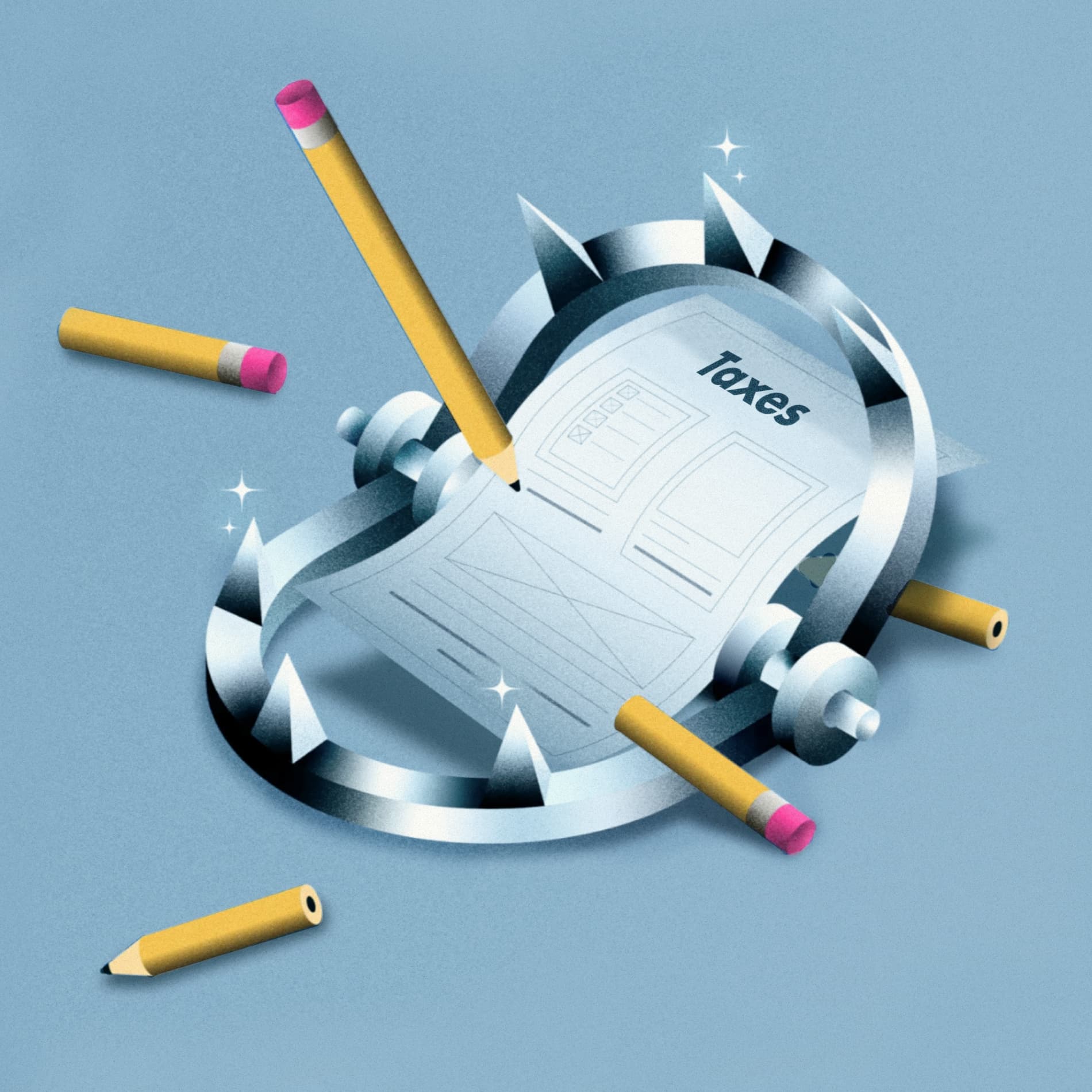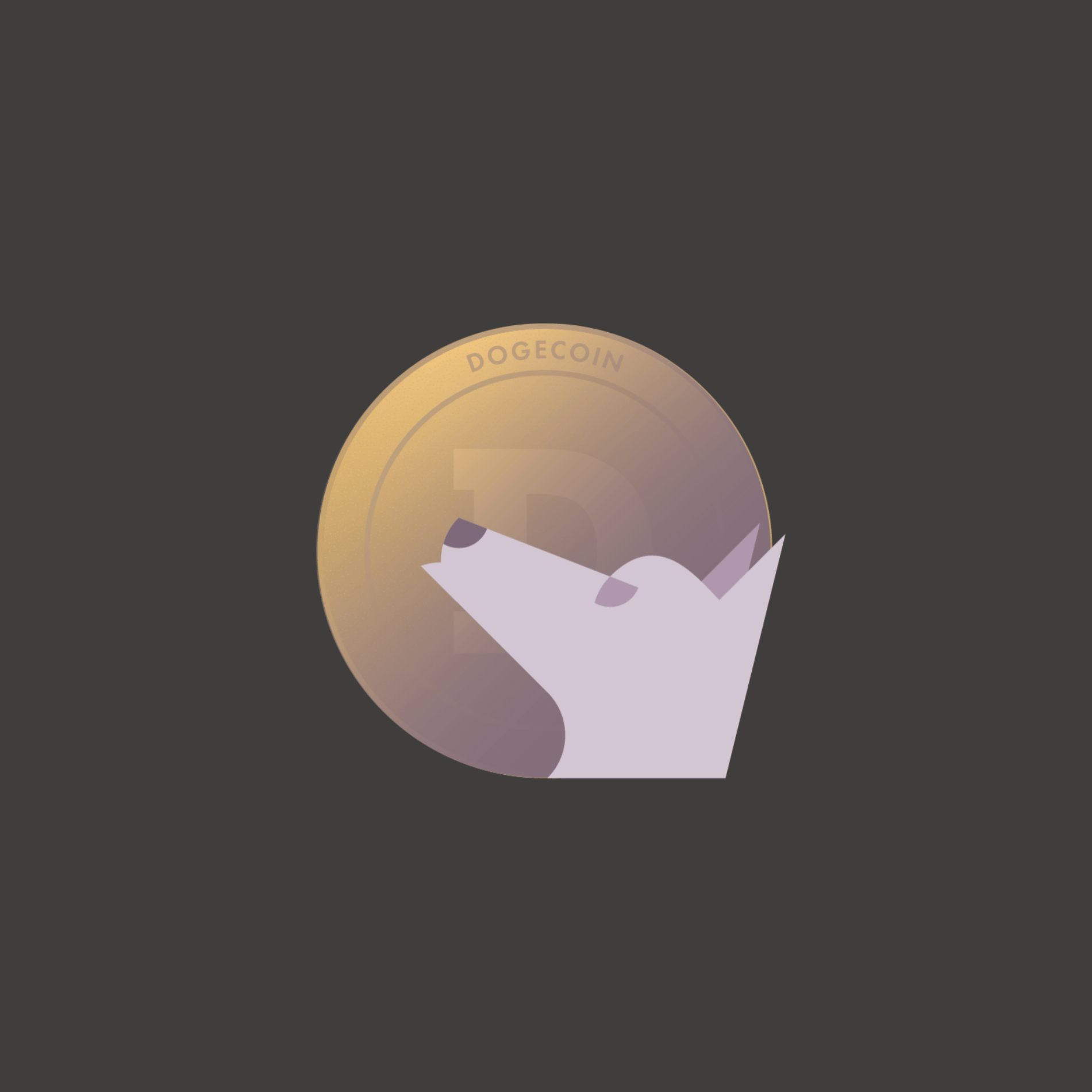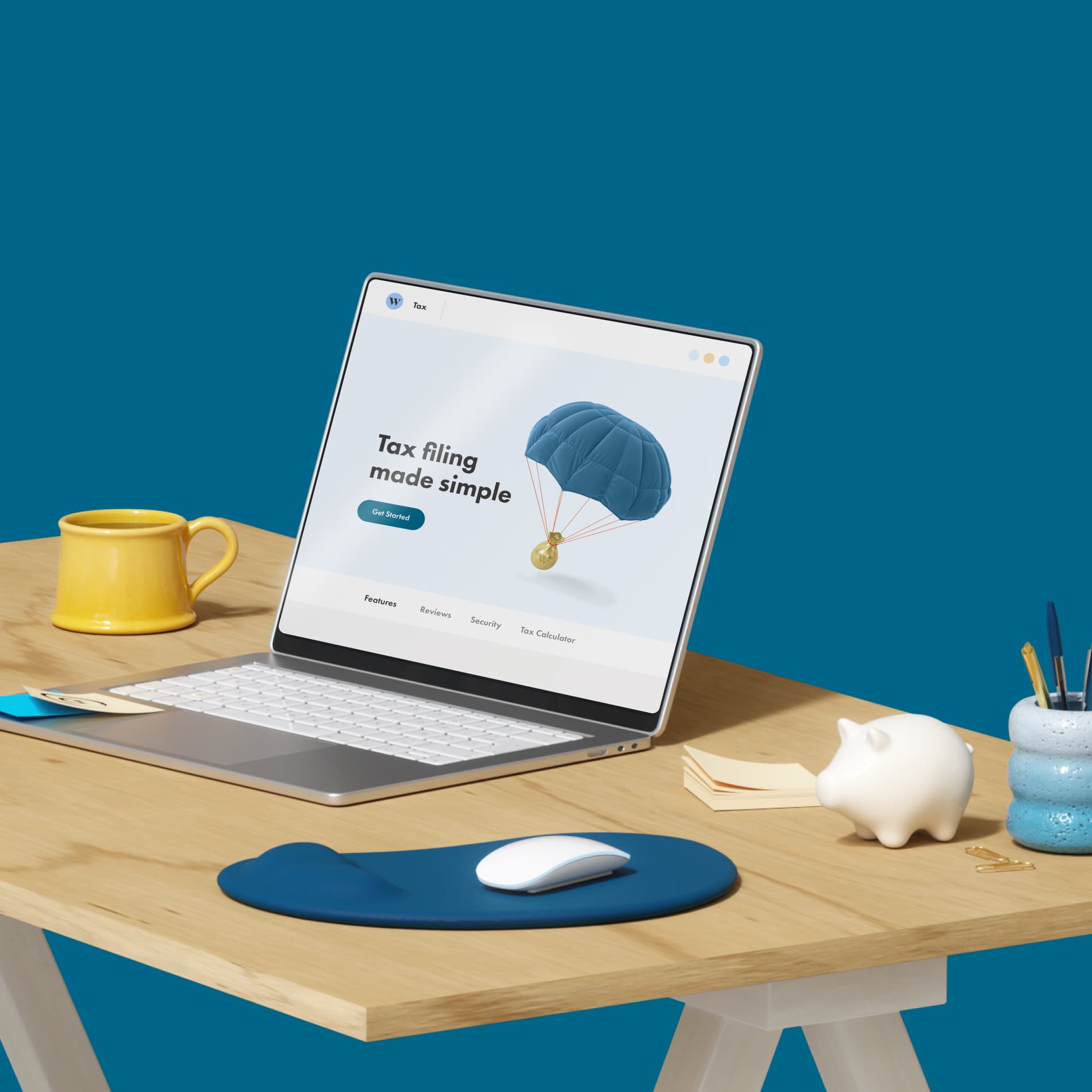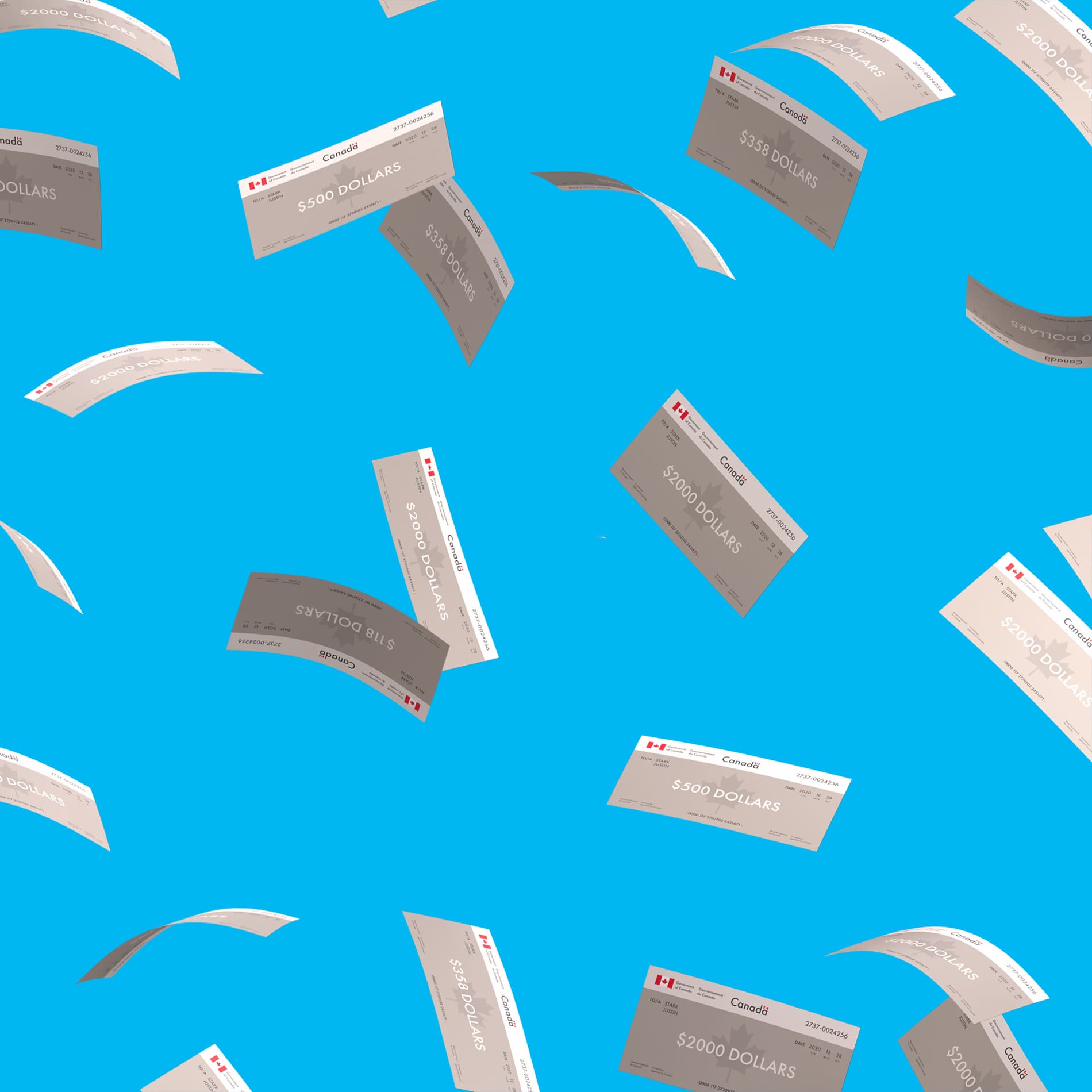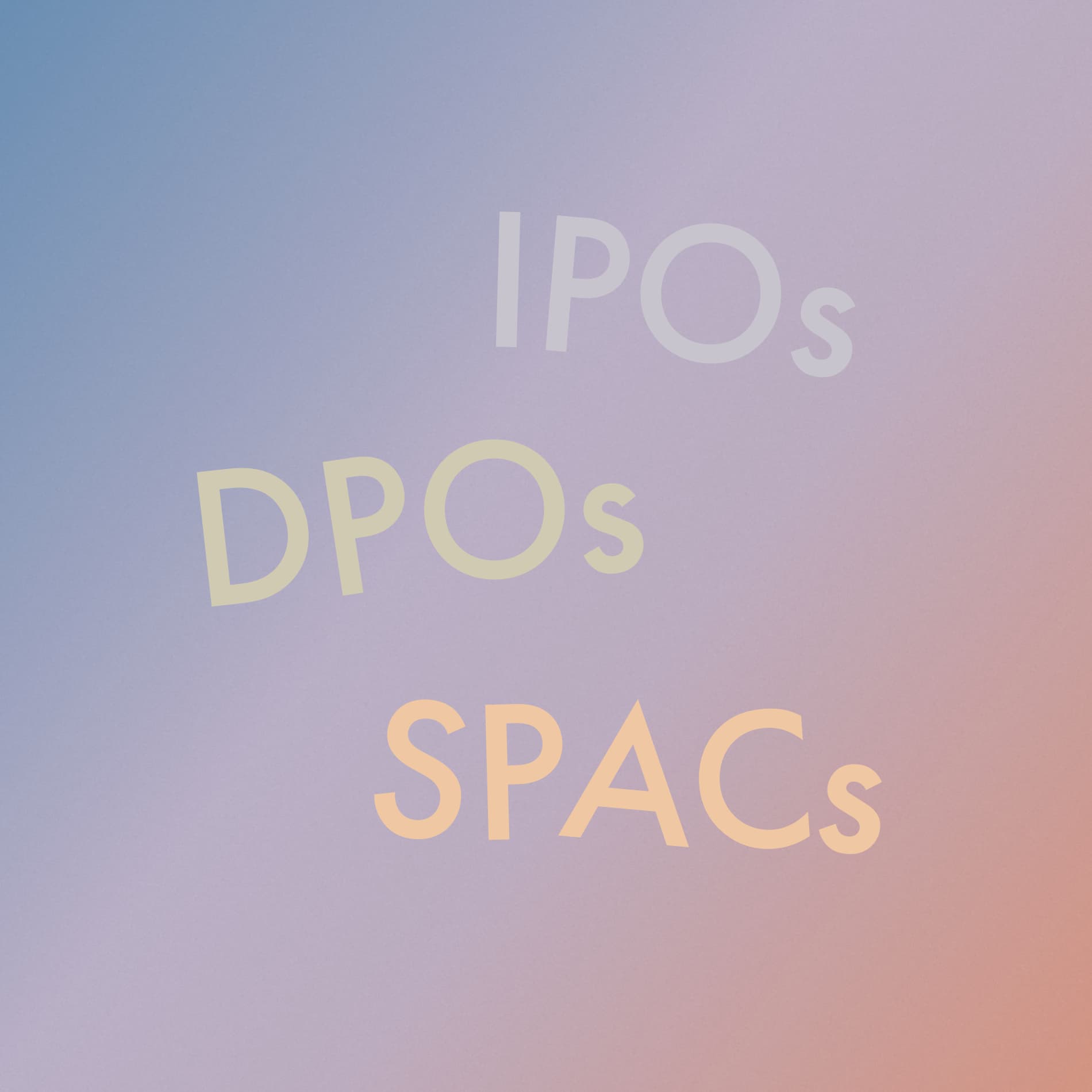
Finance for Humans
How I Got Out of (a Lot) of Credit-Card Debt
When she was 30, Pauleanna Reid—journalist, advice-giver and entrepreneur—found herself in more than $50,000 in credit-card debt. Now, at 32, the debt’s gone and her business is thriving. Here she breaks down her advice for getting out of debt and staying on track.
Wealthsimple makes powerful financial tools to help you grow and manage your money. Learn more
The day I decided to get out of debt started with me crying into my cell phone, curled up on the floor of my office bathroom. It was 2017 and I was talking to a collections agent. I’d already told him I had no money. I’d already told all the credit card agents, many times, that I couldn’t pay. I was 30 years old and owed $52,000, a debt I'd started accruing when I opened my first line of credit when I was 21.
“Ma’am,” said the agent. “Can I say something? You are too young to have this issue.”
I was working as an executive assistant for two C-suite executives and provided additional administrative support to the president of a corporate fashion retailer in Brampton, Ontario, where I was born and raised, and making $65,000 a year. It was just enough to cover my living costs, but I was constantly going out with friends and clients, picking up expensive tabs in order to keep up appearances. But the real problem was that my finances were already a mess. In my 20s, I’d opened multiple credit card accounts and maxed them out, then took out loans. I rocked bags and accessories that amounted to thousands of dollars even though I only had a few cents in my bank account and borrowed more.
Something in the agent’s tone that day made me stop crying. I knew what he was saying was true. I’d been spinning in circles trying to keep up appearances so no one would catch on, and I was tired of maintaining the facade. I was tired of the stress and anxiety. I’d recently been diagnosed with anxiety and depression, the debt was only compounding my symptoms.
When I hung up the phone that day it really fueled the fire to get my shit together. I would do whatever it took to pay off my debt. I’d been a business owner and side-hustler for years, but I hadn’t taken it as seriously as I needed to. I had the skills, I just needed to change the way I lived.
Today, at 32 years old, my debt is gone. My celebrity ghostwriting agency turns a six-figure profit, and my credit score is 702. It’s been a tough lesson, but one I won’t forget: if you never understand money, then you’ll always be a slave to it.
For a lot of people, confronting debt is the first step to becoming financially free. And it can be one of the most liberating things you ever do. That’s why I’ve committed to sharing with as many people as possible what it took to pay down debt while building a business and planning for the future.
Here are what I think are the five most important steps for getting out of debt:
Step One: Get Yourself a Board of Advisors
The first thing I did was take stock: I had a job and a salary, but I wasn’t making enough money to get out of debt. What I did have, however, were a lot of smart people around me. I also had an accountant and bookkeeper — a husband and wife team, the bookkeeper handled my day-to-day spending and the accountant handled my taxes and tried to educate me about being an entrepreneur. They were a huge resource, I just hadn’t really been paying attention to them. So I made an appointment.

Sign up for our weekly non-boring newsletter about money, markets, and more.
By providing your email, you are consenting to receive communications from Wealthsimple Media Inc. Visit our Privacy Policy for more info, or contact us at privacy@wealthsimple.com or 80 Spadina Ave., Toronto, ON.
Then I set out to hire a financial advisor.
I remember feeling very nervous. I was broke, and I thought only rich people had advisors. But I needed someone who could help manage my TFSA and RRSP accounts. And when someone told me that you can start where you are, and start small, that put me at ease.
I was as careful choosing a financial advisor as I would have been if I were picking a romantic partner — I asked for recommendations and spent a lot of time interviewing. I wanted them to be qualified and trustworthy, but I also wanted them to have personal ambitions that could inspire me. If you hire a therapist, you'd hope that they have done the work themselves. The same goes for a financial advisor. I always say, if you have five broke friends, you likely will be the sixth.
And then I had my money team: a financial advisor, a bookkeeper, and an accountant.
Building a team like that may sound out of reach. But there are many ways to inexpensively build a money team, you just have to be creative. I hired people because I thought it was wise to surround myself with experts that I could interact with (and because I don't have the patience to do it all myself).
Step Two: Define Your Goals
At this point I think it’s important to acknowledge that when you show everything to your money team you’re going to feel exposed – your financial documents and choices will be there for everyone to see. It’s going to be alarming at first. It’s OK to feel nervous. A transition of any kind is uncomfortable.
It’s also got to start somewhere. My first meeting with the financial advisor was at his office. We had an honest conversation about my goals and where I saw myself in a few years, then broke down numbers and made a savings plan.
Together with my team I defined three main goals:
Pay down my debt over five years
Save money for retirement
Maintain a baseline balance in my savings and TFSA accounts as a safety net (I was and am a single woman, so keeping a baseline in my account for security was very important to me.)
We determined that I would put $400 towards the debt each month (paid out twice monthly), which left me $50 a month to put towards savings.
My bookkeeper would help track my expenses and make adjustments to those initial numbers. We’d reevaluate every six months. In the meantime, I could turn to the accountant to ask questions and get advice on the moves I made with my business.
Recommended for you
Over the following months I had numerous conversations with my money team members about why I got myself into the credit mess to begin with. The conversations helped me keep an eye on the bigger picture: it was a short-term sacrifice for a long-term gain.
Step Three: Start a “Financial Diet”
This is the part where you determine that one key piece of the puzzle — how much you can reasonably spend each month. It’s a calculation you’ll make based on the amount of debt you’re paying off, your income, your baseline, and how much you’re saving. And it’s probably going to mean making major behavioural shifts, which takes examining your behaviour and then being really honest about what can change and how to make the changes stick.
It became clear pretty quickly that if I was going to move the needle on my debt, it would require saying no to a lot of things. Fancy dinners, shopping trips with girlfriends, lending funds to family members. I had to have strict boundaries.
So I put myself on a financial diet. No vacations, no clubs, no dinner dates, no picking up big tabs. If I couldn’t pay cash or if something wasn’t part of my budget, then I simply could not afford it. It was non-negotiable.
And yes, it can be hard to say no to friends. But what happened was that my goals had become so important that saying “no” was actually quite easy. The best way I know to communicate your situation is by being honest. If they’re really your friends, they will understand that you can’t attend lunch.
You’re also likely going to have to learn to have fun in new ways. There are plenty that don’t involve spending money: have a game night, grab a cookbook and try a dish from another part of the world, even be a tourist in your own city (especially now!). You’ve just gotta get creative and be willing to try new things.
I'd be lying if I didn't say I slipped up a few times. Mainly on food — I am a foodie and I love dining out. For the most part though I was very strict with myself because I never wanted to feel broke again.
Step Four: Set up a System to Keep on Track
Once I’d examined my life and behaviour, I made a list of tricks and tips that could help me stay on my path:
Create a spreadsheet: somewhere to see my goals for each category and record everything I spent.
Open a savings account with an auto-deposit function so money went in automatically every month.
Schedule monthly check-ins with my money team to review my spending and get advice. One way to make saving money a positive action (rather than a restriction) is by finding ways to feel like you’re winning (game-ify it as they say). When I went for check-ins and saw that what sometimes felt like tiny actions were making a real impact I felt a rush, like I was winning, which helped me the next time I had to decline a friend’s birthday dinner.
Get some jars. That’s right, I even bought jars to put change in — one for groceries, one for leisure.
Visualization exercises. Yep, I did that, too. (I drive through wealthy neighbourhoods! I close my eyes and envision deposits in my bank account! Imagined the home I want to live in!)
And as my finances started changing, my confidence grew. It felt great knowing that I was in control of my future.
Step Five: Take a Look at Your Ability to Earn
And last but probably most important, I took a hard look at my salary and my ability to earn. I had to bring in more money if I was going to reach my debt repayment goals.
I sat down again and wrote out my skills, and how much I could possibly make by tapping them. Something I’ve learned from a close friend is that, if you have ever done a project at school or solved a problem at work, it requires a skill that you can probably monetize. Everyone has skills they can package, market, and sell. What I was really good at, and what I could envision growing into a real profitable business, was ghostwriting. In my corporate role I penned emails and speeches for my boss throughout the years. I’d been freelancing as a journalist. I was already operating in my core strengths without even realizing it. I decided to launch a ghostwriting agency.
You have to know going in to any side hustle that it’s going to require an investment before it yields a profit. Here’s what I invested in before I saw a dollar of profit:
A business plan. No matter what, you’re going to need a plan if your side hustle is going to make real money. It took me about three months to complete mine.
$1,000 for a really good website. Mine was designed by a friend who gave me a discounted rate on the site and a logo.
A lot of research. I had to study the industry before I could jump in. I did market research, and made a customer journey map. I created a blue ocean strategy, sales and negotiation, team management. I listened to podcasts and other educational material so that I could learn how to expedite my growth, hire smart, manage my time, and automate systems in my business. I became obsessed with the process of figuring it out.
The biggest investment of course was time. I'd work nine to five, then go home and work six to midnight, five days a week. When people ask me about side hustling to get out of debt, I tell them to examine their workload alongside their abilities: if what they can handle are more hours at work or asking for a raise, I advise starting there. Side hustling isn't for everyone.
Financial Freedom Equals Confidence
Tackling the debt was extremely freeing — the weight of anxiety slowly lifted — and put me in a position to prepare for the next phase of my life. I started thinking about buying a home. I could travel at my leisure, help my parents, and plan for retirement.
And In 2017, I launched WritersBlok, my business that helps leaders and doers who are shaping the future turn their personal stories into powerful brand assets, from books to keynote speeches. My clients are celebrities, athletes, executives, and politicians.
By 2018, I had earned an additional $150,000 doing that. I was saving $500 each month, and had paid off 45,000 of my debt. In January of 2019, I quit my day job.
Financial freedom to me means having the power to make choices. Going into my second year as a full-time entrepreneur, my 2020 first-quarter income hit six-figures in earnings. And my security baseline is now $15,000. I won’t let my accounts go any lower.
It only took two years to climb out of debt, but considering I launched my first company (and failed miserably) at age 21, it’s an accomplishment that was actually more like ten years in the making. I’ve tried and fallen on my face many times, but I always picked myself back up again.
I still have to be smart and mindful about my money. I have to be very selective with my investments. It’s a choice I have to make daily, to be honest. It’s hard. I’m always tempted. But it’s worth it.
Pauleanna Reid is a ghostwriter, journalist, mentor, and founder of the WritersBlok.
